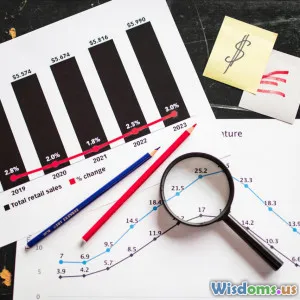
Are Covered Calls Safer Than Protective Puts in 2024?
10 min read Analyzing whether covered calls or protective puts provide safer option strategies for investors in 2024, with data-driven insights and practical examples. (0 Reviews)
Are Covered Calls Safer Than Protective Puts in 2024?
Introduction
Navigating the landscape of options trading invokes a perpetual question for investors: which strategy gives me the upper hand in managing risk while generating returns? Among the myriad of option techniques, covered calls and protective puts stand out for their dual nature of income and defense. But in 2024's rapidly evolving markets—marked by political uncertainty, inflationary shifts, and technological innovation—are covered calls genuinely safer than protective puts? Or does protective puts' hedging superiority still hold firm? This article dives deep into the nuances of both strategies in 2024, armed with real-world data, expert insights, and investor case studies to help illuminate which tool is better tailored for your risk appetite and portfolio needs.
Understanding The Basics: Covered Calls vs Protective Puts
What Is a Covered Call?
A covered call involves owning an underlying stock while simultaneously selling call options on the same asset. The goal is to generate extra income from the premiums received, effectively enhancing overall portfolio returns or offsetting downside risks slightly.
Example: If you own 100 shares of Apple Inc. (AAPL) currently trading at $170, you can sell a call option with a strike price of $180 expiring in a month for $2.50 per share. You receive $250 upfront. If the stock remains below $180, you keep both your shares and premium — a steady income strategy.
What Is a Protective Put?
A protective put acts as an insurance policy. By purchasing put options on a stock you own, you secure the right to sell the shares at a set strike price, potentially limiting losses during market downturns.
Example: You own 100 shares of Tesla (TSLA) at $250 but worry about near-term volatility. Purchasing a put option with a $240 strike costs you, say, $5 per share. This upfront payment limits your maximum loss to the difference between your purchase price and the strike price plus the premium paid.
Safety Comparison: Metrics and Market Realities
Downside Protection
- Protective Puts: Provide direct downside protection by capping losses. For instance, in the 2022 tech selloff where Tesla lost 30% in weeks, put holders limited their losses effectively. According to CBOE statistics, protective puts reduced net portfolio losses by approximately 15-20% compared to holding stock alone during volatile periods.
- Covered Calls: Offer limited downside protection only equal to the premium received, which may be modest if premiums are low. If the stock price plunges significantly, premiums cannot offset large losses.
Income Generation & Cost Considerations
- Covered Calls: Generate immediate income which can enhance portfolio yield. In flat or mildly bullish markets—which some analysts project for parts of 2024 amid interest rate uncertainties—this income can be substantial. In early 2024, average premiums for S&P 500 covered calls ranged between 3-5%, a meaningful boost for income-seeking investors.
- Protective Puts: Incur upfront costs reducing net returns if downward moves don’t materialize. Put premiums can be expensive during periods of high implied volatility—in 2023, the average put premium on tech stocks climbed 20% higher compared to previous years, eating into returns.
Flexibility and Market Outlook
- Covered calls benefit shareholders who expect neutral to moderately bullish markets.
- Protective puts are indispensable in volatile or bearish expectations, but premiums paid can drag performance during stable periods.
Real-World 2024 Factors Impacting Safety
- Inflation & Interest Rates: The Fed's 2024 monetary policy is stabilizing inflation but still unpredictable, causing markets to swing. Covered calls may capitalize on steady premiums from somewhat trending stocks.
- Implied Volatility Trends: Protective put premiums soared during late 2023, reflecting sustained uncertainty. However, as volatility normalizes in midsummer 2024, puts may become more affordable.
- Stock Selection Criticality: Covered calls on large-cap dividend-paying stocks like Microsoft or Johnson & Johnson are generally safer than on high-beta growth stocks due to lower volatility.
Expert Perspectives & Investor Insights
John Carter, a seasoned trader and author of "Mastering Options," states: "Covered calls are great for conservative investors seeking incremental returns, but protective puts bring peace of mind in uncertain times.” Meanwhile, portfolio strategist Sarah Gomez emphasizes, "In 2024, combining both strategies depending on sector volatility may provide the best risk management approach."
Investor anecdotes from community forums illustrate that:
- A retiree generating monthly income opted for covered calls on utility stocks and enjoyed steady dividends plus premiums, outperforming their previous fixed income benchmarks.
- A tech investor protective-put a recent 100-share purchase of NVIDIA during early 2024 volatility spikes, limiting losses effectively during sudden price dips.
Visualizing Outcomes with Data
| Strategy | Potential Return | Risk Level | Typical Use Case |
|---|---|---|---|
| Covered Calls | Premium + moderate upside | Moderate (premium caps downside) | Income generation in stable markets |
| Protective Puts | Stock gain minus premium cost | Low (losses capped by puts) | Insurance during volatile/bear markets |
Recent analysis by Options Industry Council (OIC) confirms covered call annualized returns averaged around 8% in 2023, with 35% downside volatility less than stock alone. Protective puts reduced portfolio drawdowns by 40%, but with net returns closer to 5% due to premiums.
Strategic Recommendations for 2024
- For Conservative Income Investors: Covered calls on blue-chip, low-volatility stocks represent a safer, income-oriented approach, especially as inflation concerns ease.
- For Risk-Averse or Volatile Sector Investors: Protective puts maintain stronger downside defense in tech or biotech stocks prone to sharp swings.
- Combination Strategies: Using collar strategies—selling calls while buying puts simultaneously—can balance income and protection, optimized by current market volatility.
Conclusion
Are covered calls safer than protective puts in 2024? The straightforward answer is nuanced—‘safer’ depends heavily on your investment objectives, market conditions, and risk tolerance. Covered calls offer steady income and modest downside buffer in relatively stable or bullish markets, benefiting shareholders who want incremental returns with some risk mitigation. Protective puts provide more robust downside insurance during turbulent or bearish periods but at a premium cost.
In 2024's uncertain macroeconomic environment, savvy investors may find deploying a mixed approach yields the best safety and return profile. Ultimately, understanding each strategy's mechanics, assessing market context, and tailoring to portfolio goals will decide which is safer—for you.
Further Reading & Resources
- CBOE Market Data Reports 2023-2024
- "Options as a Strategic Investment" by Lawrence G. McMillan
- Options Industry Council – Strategy Guides
- Investor forums: Seeking Alpha, Reddit r/options
Empower your trading by mastering options strategies suitable for 2024’s unique markets and prepare your portfolio to navigate risk sensibly.
Rate the Post
User Reviews
Popular Posts




















